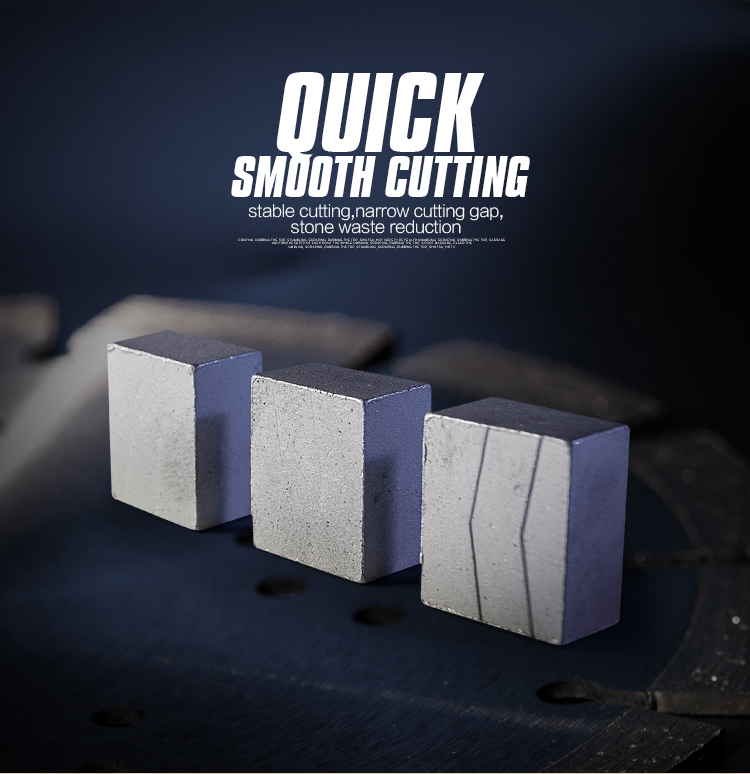Diamond segment is an important tool for cutting stone and is favored by stone manufacturers. However, there are still many newbies who do not know how to choose the diamond segment. Below we will describe the methods of quality checking in detail.
1. Dimensions
The size of the diamond segment reflects the quality of the sintering process. After accurate calculation of the addition amount, under the correct sintering process conditions, the segment size is allowed to have a deviation of 0.1mm, otherwise problems will occur. Generally, the size is too large. The reasons are: the powder is seriously oxidized, and it is still not pressed in place under the specified temperature and pressure; the temperature is not good, the alloying has not been formed, and the pressure is not enough; the feeding amount is too large; the mold is too old and the size is too large. Large fragments mean poor density, greatly reducing the bond’s ability to grip the diamond, the fragments appear sharp, but the service life is greatly reduced.

2. Hardness
Hardness is one of the indicators reflecting the quality of diamond segments. The content of metal powder quality, formula and process in the production process of the segment is clarified, and the cutting ability of the segment cannot be directly indicated. Under the conditions determined by the formula and sintering process, the hardness is within a certain range, and it is lower or higher than this range, indicating that the quality of the segment is not good.
The hardness is too low: the quality of the metal bond is not good. Typically, one or several metal powders are oxidized. When the hardness is lower than 50HRB, it means that the oxidation is very serious, and the obtained segment has good sharpness, but the service life is seriously insufficient. The amount of metal powder is too small, the weighing is inaccurate, the heating rate is too fast during sintering, causing some parts to overheat and break the material, or using too old graphite molds, etc., will lead to too low hardness.
Too high hardness: When the original process conditions remain unchanged, too high hardness generally indicates that the weighing material is wrong or the amount added is too large, some of the temperature is too high, and the hardness is too high. When the hardness is too high, the matrix is not easy to wear, and diamond edging is difficult. , the diamond segment will become very stiff.
Uneven hardness: Uneven hardness is caused by improper operation of the molding machine. If the holding time is too short or the cooling time is too short, it will cause uneven hardness.
3. Density and mass
Divide the actual weight of the diamond segment by the actual volume of the segment to obtain the overall density of the segment. It is important to check the density, especially in the absence of a durometer, the magnitude of the density reflects the function of the segment. The minimum density is calculated as follows: Minimum density = total weight of the standard volume of the segment feed segment x 95%. The main reason for the ineffective weight is that the heating speed is too fast, resulting in “running material”.
 WANLONG
WANLONG
